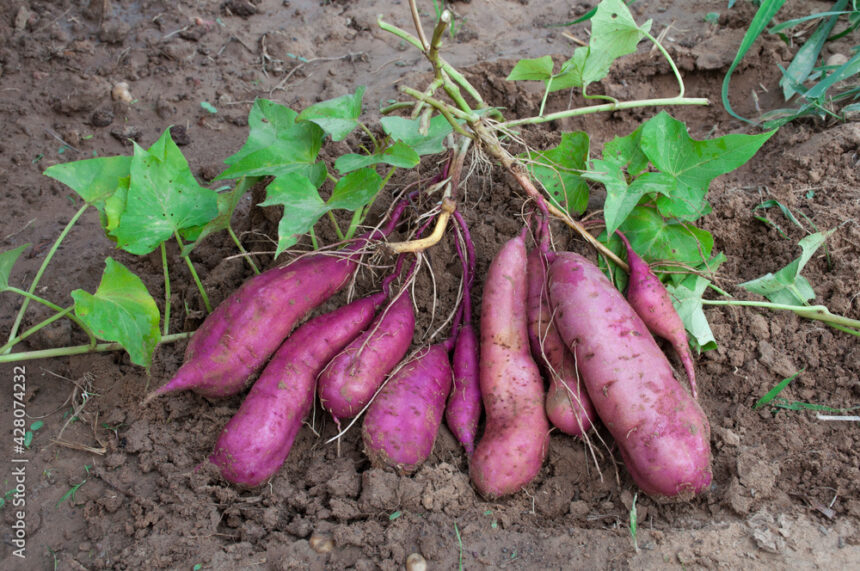When growing sweet potatoes in South Africa, there are several infections and diseases that you should be aware of and look out for. Here are some common ones:
- Sweet Potato Virus Disease (SPVD): SPVD is caused by several viruses, including the sweet potato feathery mottle virus and sweet potato chlorotic stunt virus. Infected plants exhibit leaf distortion, mottling, stunting, and reduced yields. Planting certified virus-free planting material can help prevent the spread of SPVD.
- Fusarium Wilt: Fusarium wilt, caused by the fungus Fusarium oxysporum, affects the vascular system of sweet potato plants. Infected plants show wilting, yellowing of leaves, and eventually, plant death. Crop rotation, using disease-resistant varieties, and practicing good sanitation are crucial in managing Fusarium wilt.
- Rhizoctonia Root and Stem Rot: This disease, caused by the fungus Rhizoctonia solani, affects the roots and stems of sweet potatoes. Infected plants may display rotting of roots, dark-colored lesions on stems, and wilting. Providing proper drainage, avoiding waterlogged conditions, and using disease-free planting material can help prevent Rhizoctonia infections.
- Alternaria Leaf Spot: Alternaria leaf spot is caused by the fungus Alternaria bataticola. It leads to the development of small, circular lesions with concentric rings on the leaves. Infected leaves may turn yellow and eventually die. Fungicide applications, proper plant spacing for good air circulation, and removing infected plant debris can aid in managing Alternaria leaf spot.
- Southern Blight: Southern blight, caused by the fungus Sclerotium rolfsii, affects the stems and storage roots of sweet potatoes. Infected plants show wilting, yellowing, and collapse. White mycelium and small, round sclerotia may be observed near the base of the plant. Crop rotation, deep burial of plant residues, and reducing excessive moisture can help control Southern blight.
It’s essential to regularly monitor your sweet potato plants for any signs of infections or diseases. If you suspect a problem, consult with local agricultural experts, such as agricultural extension offices or plant pathologists, who can provide specific guidance based on the region and local conditions in South Africa.
Join 'Farmers Mag' WhatsApp Channel
Get the latest Farming news and tips delivered straight to your WhatsApp
CLICK HERE TO JOIN






